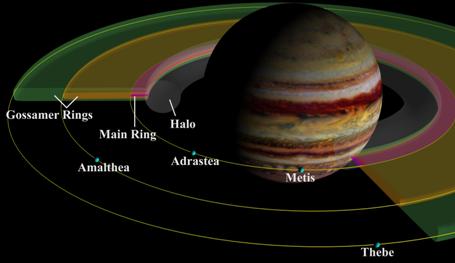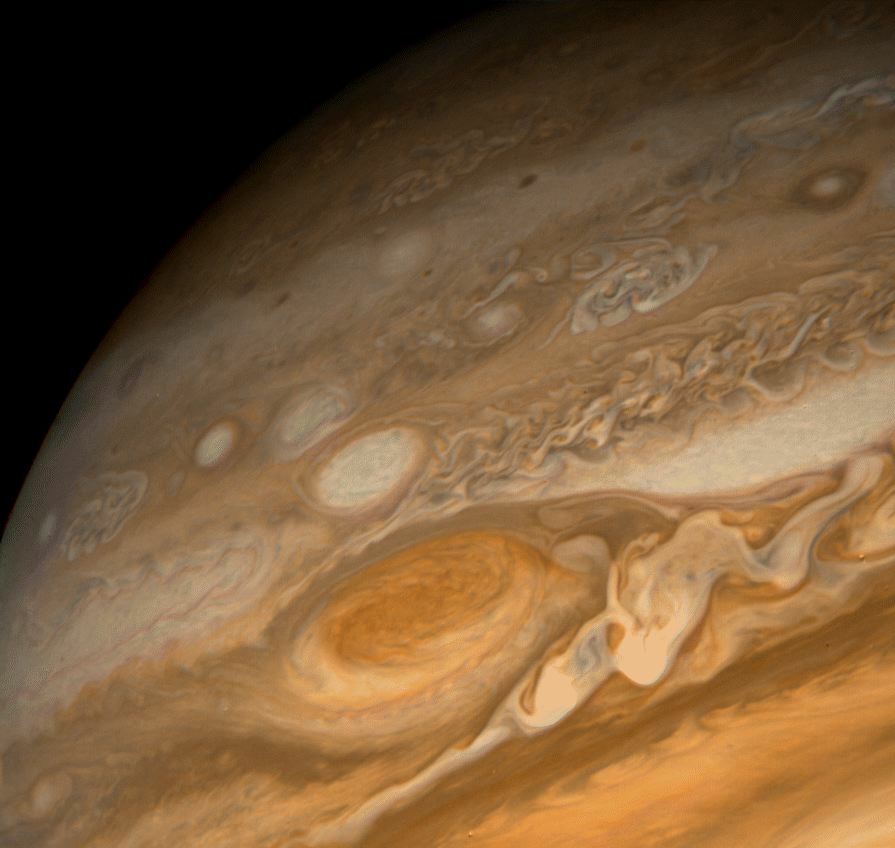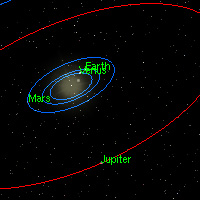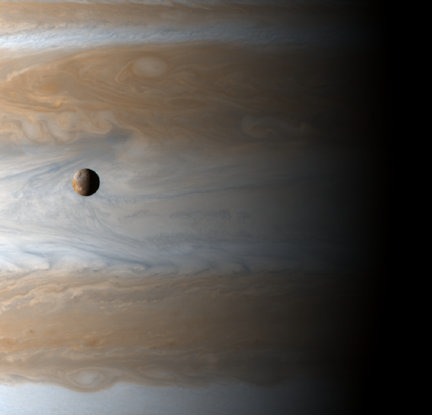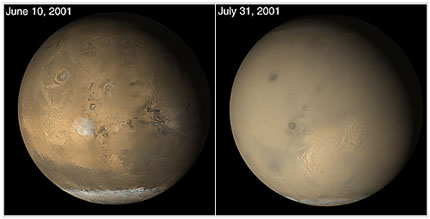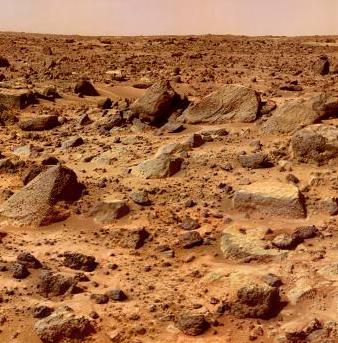We all known that Saturn has rings, but does Jupiter have rings? Yes, it does. Four planets have a rings system: Saturn, Jupiter, Uranus, and Neptune. Saturn is best know because it has the brightest and most extensive rings system in the Solar System.
The rings around Jupiter had never been seen before Voyager 1 arrived in 1979. Since then the rings have been observed by the largest telescopes on Earth, the Hubble Space Telescope, and the New Horizons spacecraft. So far, only four rings have been observed: the halo ring, the main ring, the Amalthea gossamer ring, and the Thebe gossamer ring.
Jupiter’s rings and moons exist within an intense radiation belt of electrons and ions trapped in the planet’s magnetic field. These particles and fields comprise the Jovian magnetosphere or magnetic environment, which extends 3 to 7 million km toward the sun, and stretches in a windsock shape at least 750 million km, which puts it inside of Saturn’s orbit.
The main ring is about 7,000 km wide and has an abrupt outer boundary 129,130 km from the center of the planet. The main ring encompasses the orbits of two small moons, Adrastea and Metis, which may act as the source for the dust that makes up most of the ring. The ring needs a constant source of dust because small particles can only exist for 100 to 1000 years. The dust is thought to rise from moons within the rings due to micrometeoroid impacts. The main ring merges gradually into the Halo ring. The halo is a broad, faint torus of material about 20,000 km thick and extending halfway from the main ring down to the planet’s cloudtops.
On the outer edge of the main ring and opposite of the halo ring, is the broad and extremely faint Amalthea gossamer ring. This ring extends out beyond the orbit of the moon Amalthea. Scientists believe that it is composed of dust particles smaller than 10 microns. 10 microns is about the size of cigarette smoke particles. It extends to an outer edge of about 129,000 km from the center of the planet and inward to about 30,000 km. The origin of the ring is probably from micrometeorite bombardment of the tiny moons orbiting within the ring. Last, is the Thebe gossamer ring. This is the faintest of the Jovian rings and extended from the orbit of the moon Thebe at about 226,000 km towards the planet, ending at about 129,000 km. The exact inner edges of the two gossamer rings are hard to define because they overlap the brighter main ring.
So, the answer to ”does Jupiter have rings” is yes, it has four known rings. Be sure to read about the ring systems of Neptune and Uranus as well.
Here’s a news article from Universe Today about the rings of Jupiter, and information about New Horizon’s observations of Jupiter’s rings.
Here’s NASA’s Solar System explorer information about Jupiter’s rings, and a cool image from Astronomy Picture of the Day of Jupiter’s rings.
We’ve also recorded an entire show just on Jupiter for Astronomy Cast. Listen to it here, Episode 56: Jupiter, and Episode 57: Jupiter’s Moons.
Source:
http://solarsystem.nasa.gov/planets/profile.cfm?Object=Jupiter&Display=Rings

